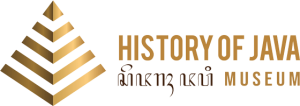History Of Java : as written by Thomas Stamford Raffles in his book entitled The History of Java. No doubt, the book The History of Java has become one of the most important historical sources to know the life of Javanese people in the past. but do you know?? in museum history of java everything is complete and you can learn to know there.

If in other countries, the spread of religion is often carried out by means of warfare, it turns out that this is not the case in the archipelago, peace between religions has always gotten space in this beautiful country.
Call it Hinduism and Buddhism, it is almost obvious that public acceptance of the religion in the archipelago is always carried out in a peaceful way, even syncretism between the two religions in the Majapahit era with the teachings of Shiva-Buddhism confirmed in Sutasoma with its famous motto Bhinneka Tunggal Ika, Tan Hana Darma Mangrwa.
Likewise Islam, entered the archipelago since the early days of the Prophet’s emigration which was brought by merchants from Medina to the old city which was very famous in the world, Barus. Then spread to the ocean pasai. While in Java, Chinese Muslims and Persians also spread religion without any fear of rejection, even among the spreaders of the religion of Islam were given land as a center of teaching.
Especially in Java, the role of Walisongo in spreading Islamic religion was carried out peacefully. Most of the walis chose to use the cultures path to spread their religion, for example, Sunan Bonang. He created a song of Shiar, Sunan Kalijaga, acting as the puppeteer to achieve sympathy and spread Islam.
We can find this tolerance story at the History of Java Museum, a museum located on Jl. Parangtritis KM 5.5 Sewon Bantul, Special Region of Yogyakarta.
In addition to teaching Tolerance, without leaving the main mission of historical education and literacy, the History of Java Museum also intends to make the museum an attractive and up to date educational vehicle.
At the beginning, visitors were invited to catch an audio-visual glimpse of how the island of Java was formed to the people on Java. Then visitors can see the museum collection with historical artifacts.

Interestingly, visitors will be accompanied by a museum story teller that will explain interestingly about the museum’s content and history. Not only that, the History of Java Museum, as well as other D’topeng Group museums, is also equipped with Augmented Reality that visitors can use for self-photography.

Within the collection zone itself, there is a Royal Palace Pavilion, which will display collections and Bilingual Education Board regarding the Surakarta Kasunanan Palace, the Jogjakarta Sultanate Palace, Pura Mangkunegaran and Pura pakualaman.
Objects of the history of java collection include :
History of java has thousands of collections of Javanese history

“The majapahit symbol as a country. Shaped in the sun with its rays leading to directions”.

“The position of buddha amoghasida is positioned Vitarka-Mudra which is a symbolic, ritualistic hand movement used in yoga, Buddhism and Hinduism, which shows the Buddha’s pose for discussion”.
After the collection zone, visitors will enter the diorama zone with the name Kampung Selfie Mataraman, where visitors can interactively experience interesting things in the past on the island of Java, as well as take pictures on 3D interactive board.
So, it is not wrong if this museum becomes one of the objects that should not be missed to be visited together, our children, relatives and friends if we visit Yogyakarta.
